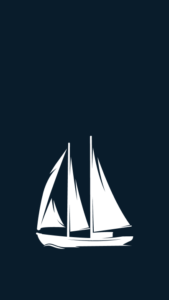
A 9-day expedition log through Haida Gwaii’s Islands of Beauty
Gwaii Haanas July 3-11, 2018
Crew: Captain Russell Markel, Deckhand Oriana Smy, Expedition Chef Erin Vickers, and Onboard Specialist: Graham “Jaahljuu” Richard
Disclaimer: Each day aboard the Passing Cloud is very full: full bellies, smiles, heads/hearts, and memory cards. An indeterminate amount of time and space is required to digest each and every moment, some which may present themselves as memories in later times. Please read with caution. Nostalgia and wanderlust may ensue.
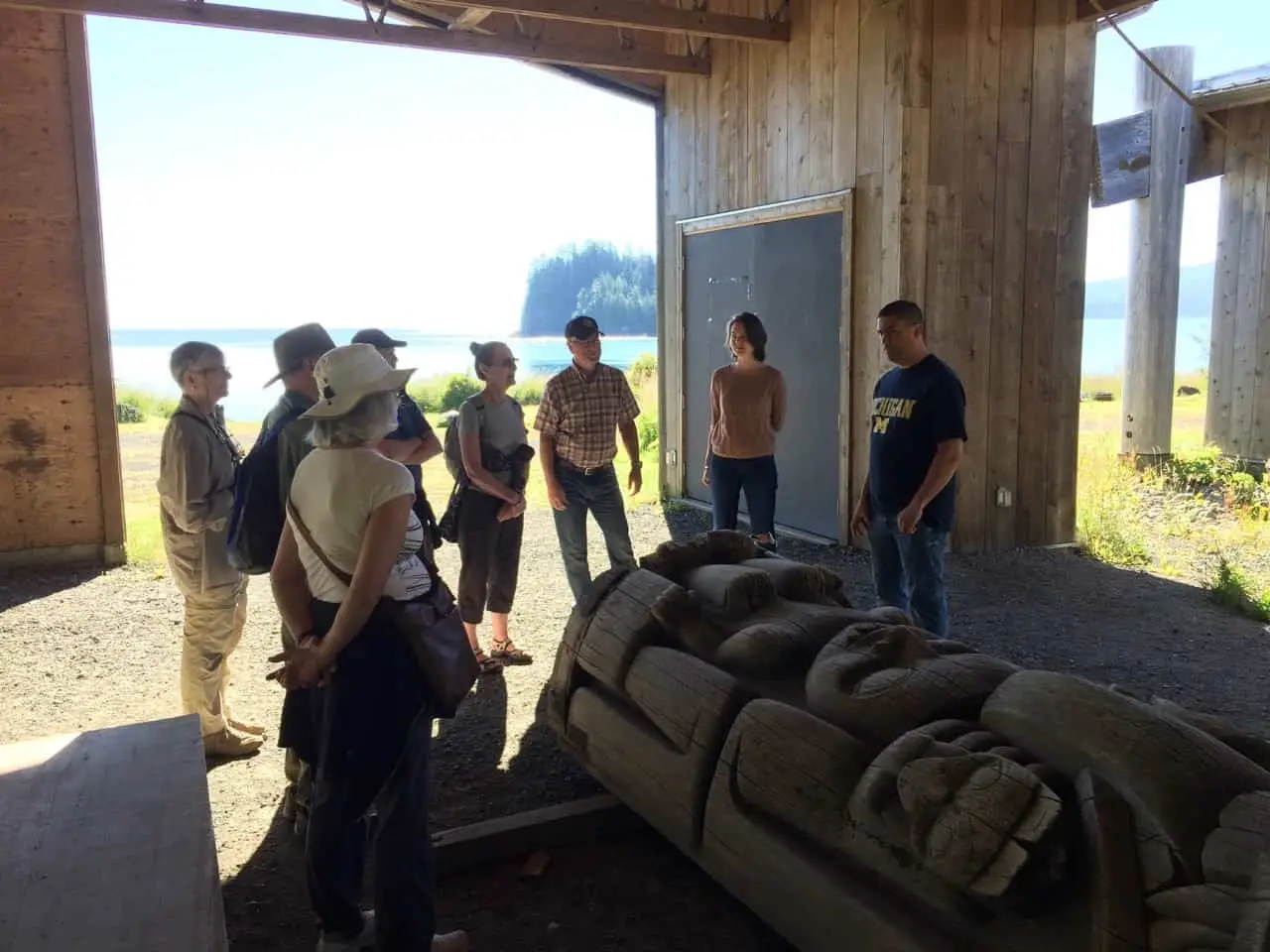
Day 2: July 4
Our day begins with a delicious breakfast at Jags Beanstalk – accompanied by some of the best coffee in Haida Gwaii – served with such care by owner, Jags himself, as he regales us with local history. We walk down the road to the Haida Heritage Center and Museum. Eyes on the water as we pass Sgaay.yas, and Gud K‘aaGwas (Jewell Island), both popular feeding spots for grey and humpback whales.
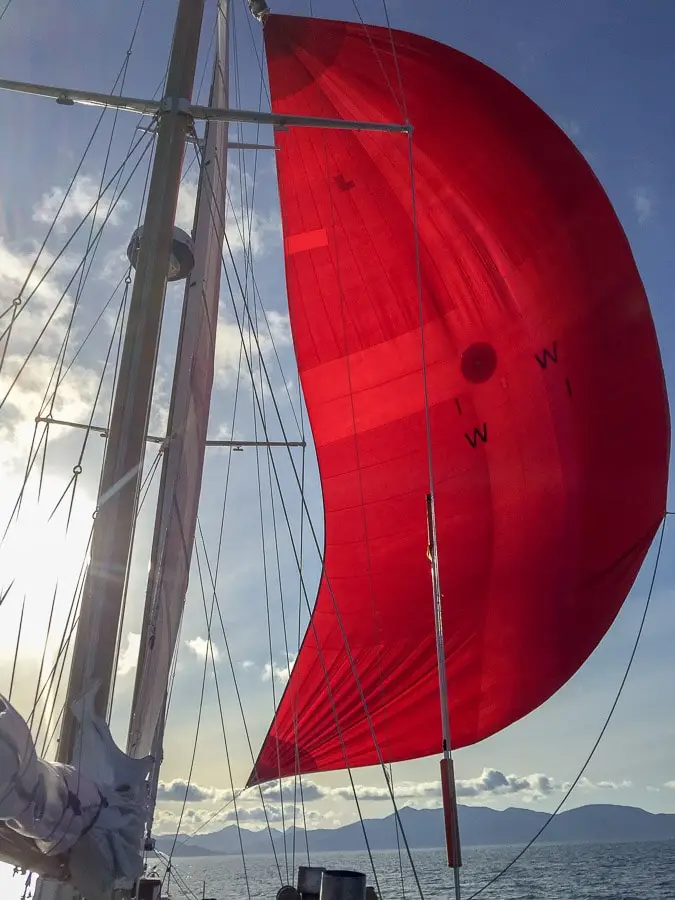
Sean Young, Haida archaeologist and Collections Curator for the Haida Gwaii Museum, greets us upon arrival. Sean leads us on a private tour of the museum and provides a brief history of the ancient history of Haida Gwaii. There is so much history here and we are merely scratching the surface for an introduction to the areas we are about to be fully immersed in. As a descendant of K’uuna, Sean informs us not only of the archaeological history of the region but also the oral history that has been passed down through his clan for generations. He reminds us as we learn about stone tools dating back to 13,700 years ago, that Haida is an ancient culture but it is not a past culture. It is very much a continuous, living culture today.
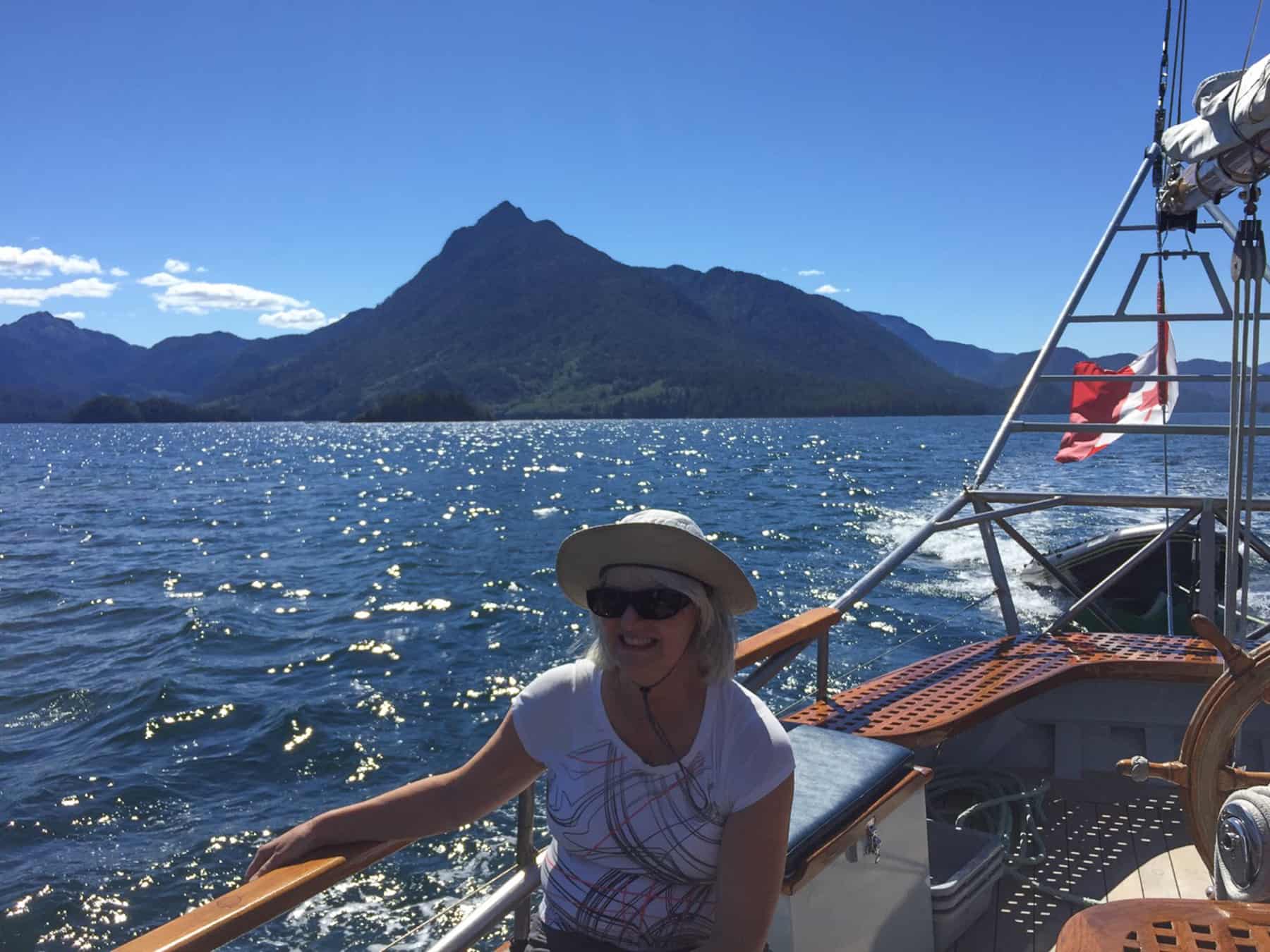
After a picnic-style lunch on the ferry from Skidegate to Alliford Bay, we take to the back roads to get to our destination of Moresby Camp where the Passing Cloud and crew await our arrival. We travel through a more recent history of this land, where it becomes very clear the resource extraction business is also still very much alive and active. We arrive at an inlet surrounded by snow-speckled Mount Moresby, Haida Gwaii’s highest peak standing at 1,175-meters-high (3,855 feet). We board the Passing Cloud and our ship-based adventure begins!
Southbound from Moresby Camp, we soak up the sun on Passing Cloud’s beautiful teak deck that was reclaimed from the Union Steamship, Cardenia. We slow right down and take in the smells and sights as we get acquainted with the way the ocean feels beneath us. Before we can barely get our bearings – orcas! One big male and a female with calves transit slowly back towards Louise Narrows. Graham teaches us a new Haida saying – ‘Haana Nadjuu’, meaning cute and adorable. This calf was certainly both of those things.
We raised the gennaker – a hybrid between a spinnaker and a genoa – to drift downwind with the engine off in a light breeze. Newcomb Peak rises up from the picturesque inlet as we near Louise Narrows. We wait a while as the whales disappear and get lost in the sparkling sunlit sea, before we’re off again, back on our southbound pursuits.
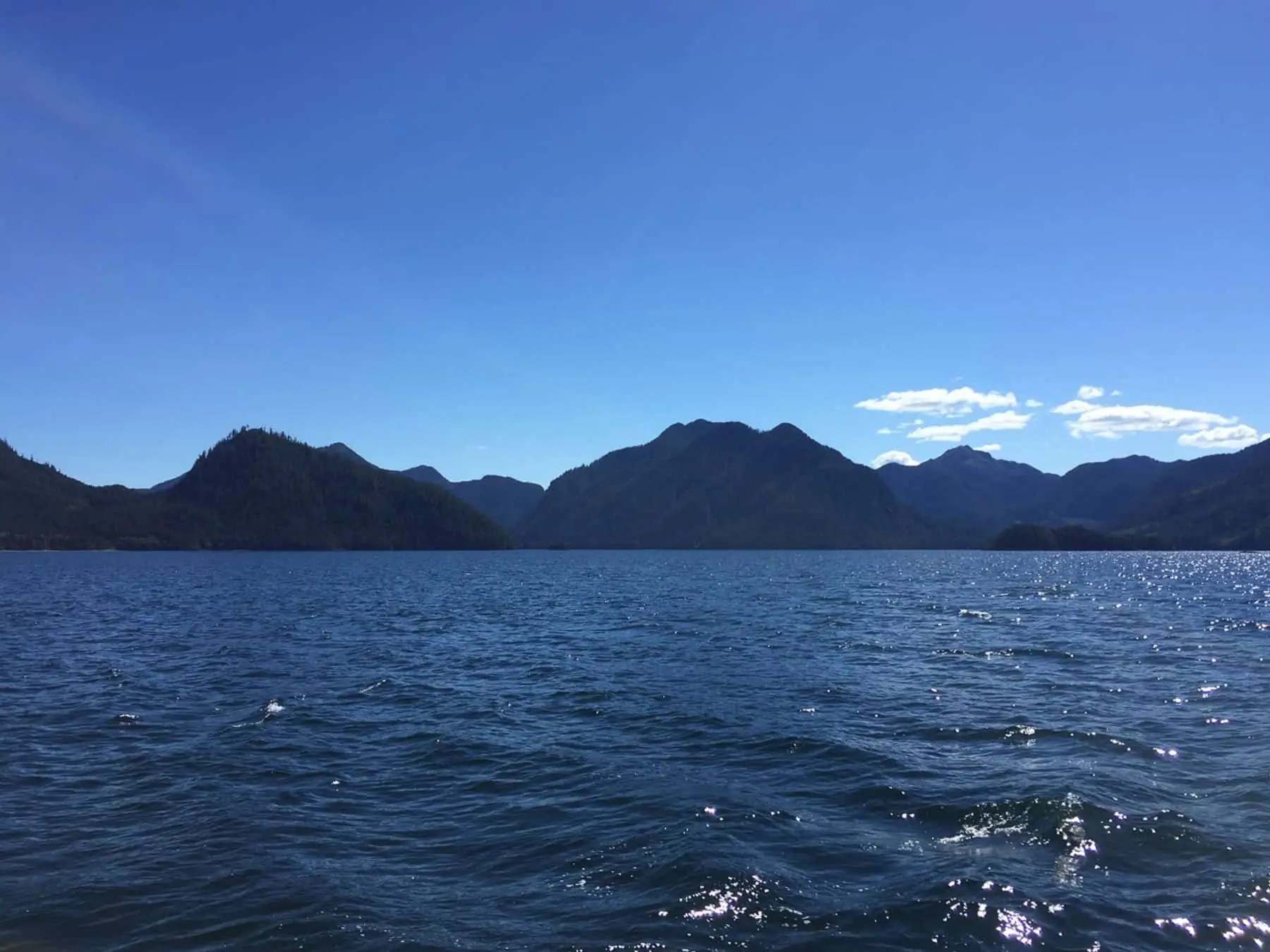
We motor out to the mouth of the inlet, passing more evidence of an earlier industrial boom. Pillars line the shore, marking where a log sort had once led to a locomotive that would have delivered some of the world’s most sought-after trees: the Sitka spruce. Most of the mosquito bombers built during World War I, were built from spruce trees extracted from right here in this very place. Directly across the inlet marks a site with evidence of a much older civilization – one far less destructive – a Haida Village site of the Cumshewa People. This site was one of the stepping-stones as the southern villages were forced to merge as they migrated north to Skidegate after their population was decimated by the smallpox epidemic in the 1860’s.
The stark contrast sets the tone for the beginning of our voyage as we cross the threshold of this ancient cultural landscape. We point our compass south to the Haida village sites of Gwaii Haanas National Park Reserve, National Marine Conservation Area Reserve, and Haida Heritage Site. We’ll figuratively travel back in time, as we discover the history from present-day to 13,700 years ago and beyond. The intertidal evidence indicating 10,700-year-old civilizations, and the older stone tools and bones found at higher elevations, such as caves, around 13,200 years ago. That’s nearly three times older than the pyramids of Gaza, to put things into perspective.
Our first anchorage is at Thurston Harbour etched into Telunkwen Island just on the northern edge of the Gwaii Haanas boundary. An area once bustling with the logging industry in the 1940’s to 1960’s. There was even a YMCA that would host formal dances. Across the harbour we see a younger alder forest lining the beach in one area, most likely marking the townsite. It’s hard to imagine now, as we sit in this quiet anchorage with a few fishing boats seeking refuge before setting off for the early morning bite. We settle into our sleeping quarters for our first night aboard our home on the water, the Passing Cloud.
